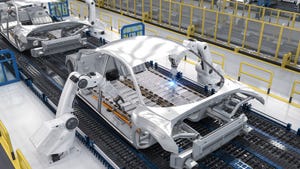Are electric vehicles more or less dangerous than gasoline-powered racing cars?
February 21, 2021
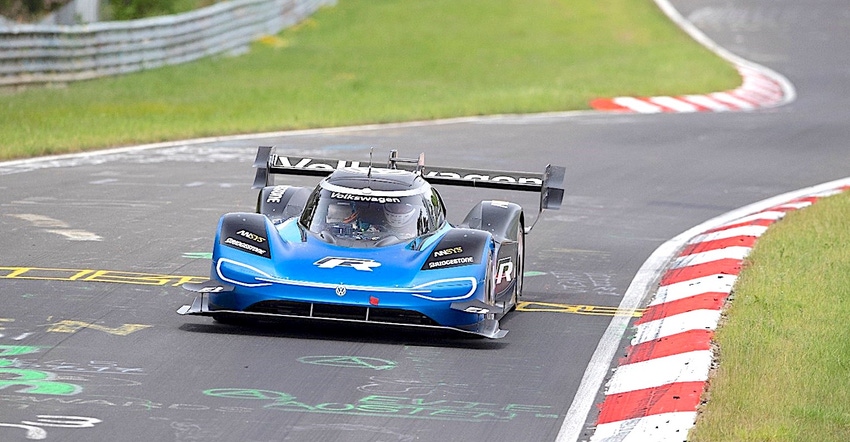
Electric vehicles (EVs) are slowly catching on with the general public, as a larger number of different types of appealing vehicles, with longer battery range, and exceptional levels of performance are reaching the market at more affordable prices. As EVs become more mainstream, there is growing interest in EV racing.
All auto racing is dangerous. Traveling at high speeds at the limit of vehicle performance and tire capability while attempting to finish ahead of your fellow competitors occasionally results in unfortunate outcomes. Because of decades of engineering, research, and innovation, however, racing has become increasingly safer for competitors, crews, workers, and spectators.
For this story, Battery Technology set out to see if racing EVs was more or less dangerous than racing vehicles powered by traditional gasoline-powered internal combustion engines (ICE). We spoke with experts who have built and raced electrically powered vehicles in road racing, drag racing, and land speed racing and asked them to help us understand what challenges EV racing presents.
EVs were first
History tells us that the first electric racing took place more than 120 years ago. In 1898, Gaston de Chasseloup-Laubat driving a Jeantaud electric car set the first official world land speed record. His top speed of 39.24 mph (63.15 kph) in a standard production machine was improved upon in 1899 when he built a streamlined body for the car—this was probably the first-ever attempt at improving the aerodynamics of an automobile. Later, while competing against Camille Jenatzy’s electrically-powered Le Jamais Contente, the streamlined Jeantaud reached a speed of 57.65 mph (92.78 kph). It would be Jenatzy’s torpedo-shaped aerodynamic machine that was the first to break 100 kph, however, reaching a speed of 65.79 mph (105.88 kph) in 1899.
As successful as these early electric automobiles were, the limitation with electric vehicles, then and now, was the amount of energy that could be carried in the battery. Le Jamais Contente would be the last electric vehicle to hold the “ultimate” land speed record—defined as the fastest vehicle regardless of power source.
Electric vehicles faded from public view until the 1990s when EV hobbyists began building cars modified with electric drivetrains for drag racing. In 1997 they formed the National Electric Drag Racing Association (NEDRA) to increase public awareness of EVs and to organize and sanction safe EV drag racing events. NEDRA also wrote a comprehensive set of EV racing safety rules.
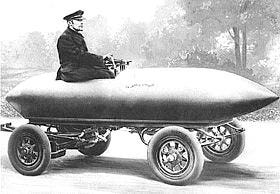
Formula E—Big Budgets
Aside from a few EV efforts like the General Motors EV-1 in the early 1990s, practical EVs for public consumption didn’t get off the ground until the introduction of the Nissan Leaf in 2010. In 2014, Formula E, a professional electric road-racing series, brought EV racing to the general public’s attention. Races were held on temporary street circuits in the heart of major cities worldwide. For the first four seasons, Formula E teams were required to make a pitstop approximately halfway through the race, during which time the drivers changed into a fully charged car to complete the race. Although it was exciting for the fans to watch a driver hop from one car to another, the overall impression was that electric cars were limited in their range and usefulness. Williams Advanced Engineering supplied the battery system for the first four seasons.
In the fifth season, the battery pack almost doubled in size to 54 kilowatts (kW) and was built by McLaren Applied Technologies, with battery cells provided by Lucid Motors. The larger pack, along with a few other changes to the cars, allowed them to cover an entire race distance without car swapping. Drivers in the series include several Formula 1 veterans, and hungry, young newcomers. OEM involvement includes teams from Audi, BMW, Jaguar, Porsche, Mercedes-Benz, Nio, Mahindra, and Nissan.
Although the details of the Formula E battery pack are closely guarded, it is known that it is comprised of more than 5,000 individual 18650-sized lithium-ion cells supplied by Sony-Murata. The chemistry of these cells is presumed to include a nickel-based cathode, based upon the weight, power, and energy capabilities of the pack. Formula E stresses safety in its racing series, noting both shock hazards and fire as its two major concerns. Because only EVs compete on the Formula E circuit, safety measures can be and are completely tailored to these concerns, the series boasts a 100% safety record, despite close racing and frequent car-to-car and car-to-wall contact.
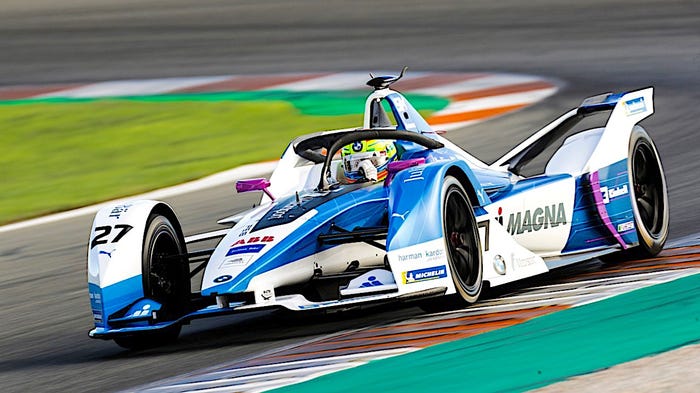
NEDRA- Drag Racing
NEDRA was the first EV sanctioning body to codify its safety requirements and to provide guidelines for on-track safety. It’s Emergency Services Guidelines For Competition Electric Vehicles was created with specific goals: “In order to better protect drivers, crew members, spectators, and emergency service responders at these race venues, a set of recommended Best Practices have been developed. These procedures are applicable for emergency, unplanned events such as a vehicle fire, high voltage battery fire, crash, or other incident involving custom-built competition electric vehicles.”
John Metric, NEDRA President, told us, “Dealing safely with high voltage requires a different skill set than dealing with flammable fuels, for pit crew and track support employees. In both cases, we try to keep it contained, but making torque means letting the ‘fuel’ out in huge rushes and refilling it slowly in the pits and containing it when there is a crash. It is that care where the ‘fuel’ differences come in.”
Unlike Formula E, where the cars and battery packs and configurations are all effectively identical, vehicles involved in electric drag racing can range from stock Tesla sedans to homebuilt specials to 200-mph Top-Fuel style dragsters. Finding a common set of rules to ensure the safety of everyone involved is a challenge.
Metric notes that there are significantly fewer moving parts inside an EV "engine". “There is less chance of mechanical failures sending parts flying. Crankshafts, connecting rods, pistons, valves, superchargers, belts, pulleys, intake manifolds, driveshafts, flywheels, clutches,” he said. “In my dragster motors there is the rotor and two bearings. That's it.”
Fire!
Battery fires in EVs are a popular social media topic and, given the relatively small number of EVs on the road today that makes it difficult to find definitive numbers, it appears road EVs are slightly less prone to fires than ordinary internal combustion engine (ICE) vehicles. Fighting an EV fire can be more involved than suppressing a gasoline fire. Tesla has a set of guidelines for first responders that recommends flooding an EV fire with at least 3,000+ gallons of water and letting the vehicle burn itself out if the water is not effective. “One thing EVs have going for them is that battery is usually slow to become involved in fire, allowing driver extraction and time for fire crews to get to the vehicle,” noted Metric. “If I could change the industry, I would mandate a fire hose access point in battery designs. Perhaps hidden behind one of the body panels—a direct fire hose hook up,” he said.
Lithium is highly reactive, however in only rare situations does elemental lithium metal exist in a battery—lithium ions themselves are not a fire hazard. The organic solvent used as an electrolyte inside a lithium-ion battery is highly flammable and is in fact what burns (along with plastic cases and separators) when a lithium-ion battery catches fire. Because the battery cell contains a large amount of energy in a small space, damaged lithium-ion cells that have an internal electrical short can generate enough heat to reignite a fire, even a day or more after the initial EV fire was extinguished. For this reason, it is advised that a wrecked EV be stored outside and away from other vehicles, in the unlikely event it should reignite. Overcharging or improperly charging a lithium-ion cell can also cause lithium metal spikes (dendrites) to form on the carbon-graphite anode, which can short out the cell and, depending upon the cell chemistry, cause a fire. Modern chargers and battery management systems (BMS) largely eliminate this possibility.
Because drag racing takes place over a very short time (usually around ten seconds) and distance (either an eighth or a quarter-mile), the type of battery used has not been an issue when it comes to safety. “NEDRA members, while following our sanctioning body rules, have experimented with everything from lead to nickel to lithium-ion and even capacitors,” said Metric. “Our members have had a great track record of not causing nationwide viral videos of EV's on fire. So right now, I would say there is no clear safer battery,” he added.
EVSR
In 2014, about the same time that Formula E was getting off the ground, a small team in eastern Pennsylvania began working on an electrically powered sports racing car to compete in nationally sanctioned amateur road-racing in the US.
EVSR (a part of Entropy Racing) got off the ground by repowering existing SCCA Spec Racers with an electric motor and controllers and commercially available lithium iron phosphate (also called lithium ferrous-phosphate, or LFP) cells. The company entered and competed in various racing and Hillclimb events (including the legendary Pikes Peak and Mount Washington Hillclimbs), and even participated in a 12-hour endurance racing event.
Racing electric vehicles on a permanent road racetrack presents its own set of different safety challenges when compared to racing Formula E on a temporary street circuit, or quarter-mile EV drag racing. Charles Greenhaus, owner, project manager, and chief engineer of EVSR, told Battery Technology, “Tesla recommends that you use at least 3,000 gallons of water to extinguish one of their cars. This is not practical for most tracks and even if they had the equipment and capacity to do so, the delays and disruption to an event would be insurmountable. The alternate recommendation is to let it burn... Again, not an option in the middle of an event.”
Greenhaus feels that sanctioning bodies and tracks are behind on their readiness for EVs. “I feel strongly that most tracks are not ready for a significant lithium-Ion fire and with that assumption, I think that comprehensive and verifiable emergency response procedures should be presented and in place to deal with the specifics of a particular chemistry before being allowed to be on track,” he told us. Experience has been a good teacher: “Over our 7 years of running EVSR in all types of events we have learned a lot. We have crashed the cars, vented and even ignited packs and run them in all temperatures and conditions,” he said.
Many events run by EVSR are sanctioned by the Sports Car Club of America (SCCA) which does not have a set of rules regarding EVs. “EVSR worked very closely with our local region SCCA as well as the national offices of SCCA in 2013/14 to create a regional rule set for our cars that everyone felt confident with. It involved battery chemistry and containment. It detailed construction and weight changes (as opposed to an ICE car) and most importantly we documented anticipated response and equipment requirements and we created a comprehensive safety guide for first responders as well as a single page ‘cheat sheet’ for course workers so that everyone knew what to expect in an emergency,” said Greenhaus.
Greenhaus credits the lack of EV-related drama that EVSR has experienced to the specific battery chemistry the team uses in its cars. “It would appear that the only thing that burns on a lithium iron phosphate battery cell is the plastic casing and the actual chemistry seems to just vent hot gas and vapor,” he explained. “Our worst incident happened recently and was about 4 minutes from detection on track until suppression in the paddock which required less than 3 gallons of water to cool the batteries sufficiently to eliminate further damage or risk,” Greenhaus told us.
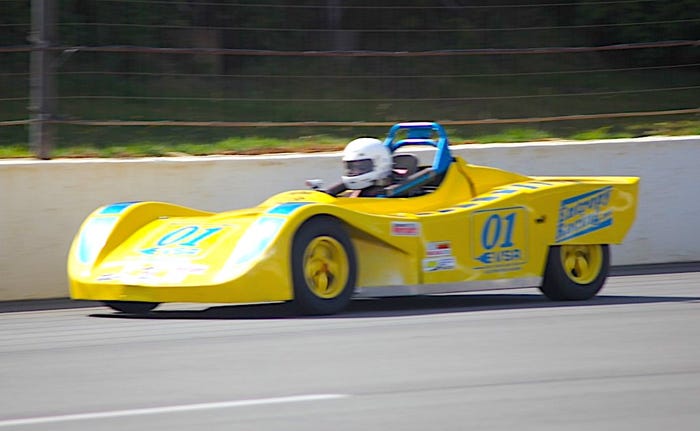
A Victim of Success
Greenhaus is concerned that EV racing might be a victim of its own success. “EV racing is not the future, it is here and just getting bigger by the day. My greatest fear is that an irresponsible or inexperienced team builds a ‘bomb’ that goes off at the wrong time in the wrong place and sets all-electric motorsports back years,” he explained.
It seems likely that, as used EV packs become more available, they will find their way onto the racetrack. “As a team, we feel strongly that modified streetcars or worse yet, modified street car batteries in one-off construction projects have no place in wheel to wheel racing,” said Greenhaus. “Roadgoing electrics are very safe because they run within design parameters and cannot exceed them without modification or ‘hacking’. As soon as you add competition into the equation, it becomes virtually impossible to monitor, manage or oversee a responsible re-application of technology without oversight that is impractical at best and more likely impossible from the standpoint of a sanctioning body. The guy building and hacking the software is likely to know so much more about the car than anyone else that he could tell you anything you want to hear and verifying it would be difficult at best,” he added.
Greenhaus noted the demands of a road racing venue or hill climb has also limited EV participation thus far. “Teslas can drag-race because they don't exceed their temp parameters in 8 seconds,” he said. “At Pikes Peak or on a road course they cannot finish a run without significant de-rating for safety. Change that and you change the safety of the car dramatically.”
Land Speed Racing
Eva Hakansson became the fastest woman motorcycle rider on Earth at 269 mph (434 km/h) in 2014, on an electric sidecar motorcycle she built herself in her backyard garage. Her motorcycle speed record has since been beaten (by a non-electric machine) but she is determined to set a new record with an all-new electric machine that she has constructed in her new workshop in New Zealand. Hakansson holds a PhD in Mechanical Engineering and after setting world and national records with her three-wheel streamliner sidecar electric motorcycle she readily admits that her racing is really just “eco-activism in disguise.”
Although it has been more than a century since the ultimate land speed record was held by an electric car, many aspects of this highly specialized type of racing fit well with electrification. Traditionally held on dry lake beds or salt flats with courses 3-10 miles long, more recently shorter 1-mile paved courses on airport runways have become popular. Two of the three most popular salt flats (Bonneville in Utah, and Salar de Uyuni in Bolivia) are at high altitude—a disadvantage for fuel-powered machines that lose power in the thin air, but not for EVs that continue to deliver full power. The relatively short duration of land speed record makes thermal management easier than running EVs in road racing.
Safety has long been a concern in the land speed record community, and EV rules (often based on NEDRA’s safety recommendations) are clearly written. “Safety is well addressed in the different land speed racing regulations, but there is are always room for improvement. EV racing with lithium batteries is still in its infancy. Writing safety rules sounds easy, but is in reality very difficult,” Hakansson told us.
As with other forms of EV racing, fire is a concern. “Battery fires make the news, but they are much slower to initiate than fuel fires, and they never instantly engulf the car like liquid fuel, so they don't present much of a hazard to the driver,” said Hakansson. Because a land speed record car may be several miles away from the nearest assistance, it is an important consideration. “The driver has plenty of time to exit,” she told us.
Beyond that, on the wide-open land speed record course, fire is more of a nuisance than a danger. “A battery fired has to be cooled as well as suffocated. They can be time-consuming and troublesome to put out, but that is more of a logistics problem than a safety hazard. Dealing with the burnt-out wreck can become a more difficult and costly hazardous waste problem than your typical burnt-out ICE car, but that is also mostly a logistics issue and not really a safety issue,” said Hakansson.
Battery chemistry isn’t as large a concern in land speed racing. “All battery chemistries have the potential to be ‘unsafe’ if they aren't treated with respect, but they are all quite ‘safe’ compared to common racing fuels such as nitromethane and hydrogen peroxide,” she told Battery Technology. “The hazards of batteries are different than those of fuels, and that has to be addressed.” Hakansson uses lithium-ion nanophosphate (LFP) batteries provided by the battery company A123.
Hakansson is obviously bullish on electrification. “EV racing is here to stay! It is just a matter of time (and budget!) before EVs take pretty much all wheel-driven records where the runtime is less than about 10-15 minutes. Hill climb, land speed racing, lap records—you name it, an EV will soon hold the record,” she predicted.
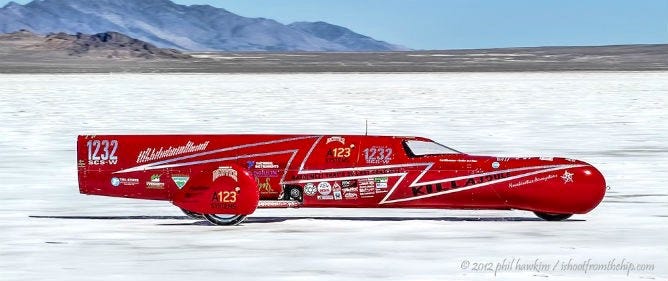
If there is one thing that all three of our EV racing experts agree upon it is the need for awareness and training. “Overall, electric vehicles can be considered safer,” Hakansson told us. “However, stewards and rescue personnel should of course always receive sufficient training. Some of the best Emergency Response guidelines publicly available have been written by the National Electric Drag Racing Association (NEDRA).”
Greenhaus walked us through the process for a recent event: “Long before the proposed event, ALL parties were informed of the intent of the team to bring an EV, Emergency Services, Tow crews, Safety workers and officials were involved and had a voice. SCCA national office was consulted and gave approval and regions that the car had already participated with were brought into the discussion. The track was informed and gave their input and requests and requirements and the team responded in a timely way to assure everyone that precautions were taken and that everyone had the basic training and equipment needed to respond to foreseeable issues. The result was a great weekend with 3 EVSRs finishing 5 races and each and every lap of every practice completed without issue.”
John Metric is pragmatic. “I say let’s keep racing, improving as we go. These events (accidents) are very few and far between right now. Depending on the event, perhaps a solution is to race near empty on a large pack and just recharge what is needed. Or set a maximum size for custom packs.”
On from here
As we noted at the beginning of this story, all auto racing is dangerous. It does not appear that racing an EV adds to the dangers, but as with any new technology, a new set of risks and concerns must be addressed and managed. Although some racing facilities have threatened to ban EVs from their tracks, to do so is to deny where the future is taking us.
Formula E has shown that EV racing can be accomplished safely on a large professional scale. NEDRA, the efforts by EVSR, and the safety record of the land speed racing community have all proven that EV racing can also be safely done at a variety of other venues. It is up to the small but growing numbers of EV racers to always place safety first.
Charles Greenhaus expressed it thusly: “The sport is not without risks and ‘new’ technology poses new risks, some known and some not, but preparation is the key to any successful undertaking and as a community of racers, EVs have a greater responsibility to be ahead of the discussion rather than reactive to it.”
Kevin Clemens is an engineering consultant who has worked on automotive and environmental projects for more than 40 years. He has set land speed records on electric motorcycles that he built in his home workshop.
About the Author(s)
You May Also Like



